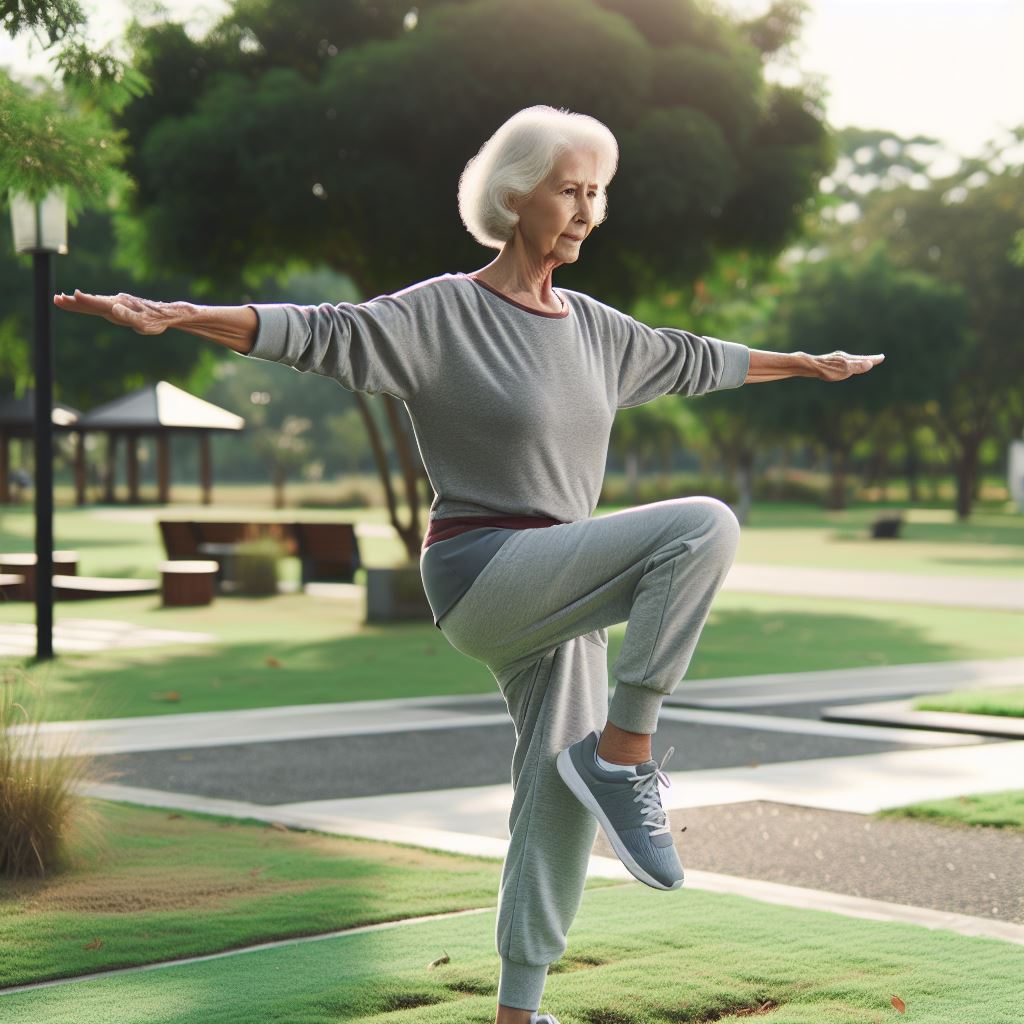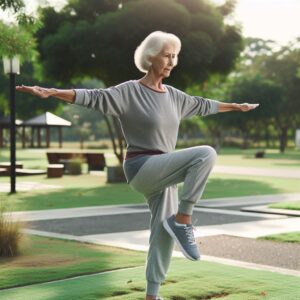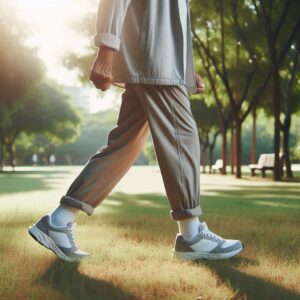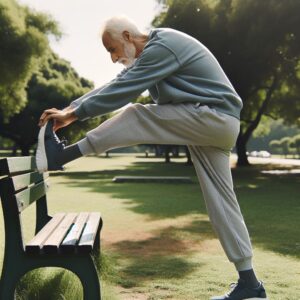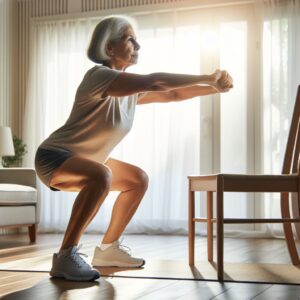Introduction
Falls are a significant concern for seniors, with statistics showing that one in four older adults experiences a fall each year. These incidents can lead to severe injuries, loss of independence, and even death. Therefore, fall prevention is crucial for maintaining the health and well-being of seniors. One effective way to prevent falls is through wall exercises, which are simple, accessible, and beneficial for improving balance, strength, and mobility.
Wall exercises are particularly advantageous because they can be performed almost anywhere, requiring only a sturdy wall for support. This makes them ideal for seniors who may have limited access to gym facilities or prefer to exercise at home. Additionally, these exercises can be easily modified to suit different fitness levels, ensuring that seniors can safely and effectively incorporate them into their daily routines.
Understanding Falls in Seniors
Falls among seniors are alarmingly common. According to the Centers for Disease Control and Prevention (CDC), falls are the leading cause of injury-related deaths among older adults. Several factors contribute to the high incidence of falls, including muscle weakness, balance issues, and environmental hazards. The impact of falls extends beyond physical injuries; they can also lead to emotional distress and financial burdens due to medical expenses and long-term care needs.
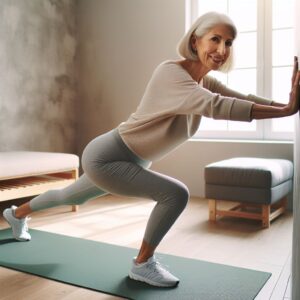
Statistics and Facts
The statistics surrounding falls among seniors are sobering. Each year, millions of older adults experience falls, and many of these incidents result in serious injuries such as fractures, head trauma, and even death. In fact, falls are the leading cause of both fatal and non-fatal injuries among older adults. The financial cost of falls is also significant, with billions of dollars spent annually on medical treatment and rehabilitation.
Common Causes of Falls
Understanding the common causes of falls can help seniors take proactive steps to prevent them. Muscle weakness is a major contributing factor, as it can lead to instability and difficulty in performing everyday activities. Balance issues, often caused by conditions such as arthritis or neurological disorders, can also increase the risk of falls. Environmental hazards, such as slippery floors, poor lighting, and cluttered spaces, further exacerbate the problem.
Impact of Falls
The impact of falls on seniors can be profound. Physically, falls can result in fractures, head injuries, and other serious conditions that may require hospitalization and long-term care. Emotionally, the fear of falling can lead to anxiety, depression, and a loss of confidence, which can further limit mobility and independence. Financially, the cost of medical treatment, rehabilitation, and long-term care can be overwhelming for seniors and their families.
Benefits of Wall Exercises For Seniors
Wall exercises offer numerous benefits that can help seniors prevent falls. Firstly, they improve balance and stability, which are essential for maintaining an upright posture and preventing falls. Secondly, these exercises strengthen muscles, particularly in the legs, core, and upper body, which are crucial for supporting the body and preventing falls. Additionally, wall exercises enhance flexibility and mobility, making it easier for seniors to move around and perform daily activities. Lastly, wall exercises are convenient and accessible, as they can be performed at home without the need for special equipment.
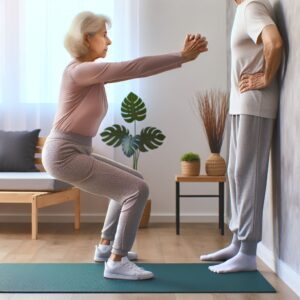
Improved Balance and Stability
Balance and stability are critical components of fall prevention. Wall exercises help improve these aspects by engaging the muscles responsible for maintaining an upright posture. For example, exercises such as wall planks and wall leg raises target the core muscles, which play a key role in stabilizing the body. By regularly performing these exercises, seniors can enhance their balance and reduce the risk of falls.
Strengthening Muscles
Muscle strength is another important factor in fall prevention. Wall exercises are effective in strengthening various muscle groups, including the legs, core, and upper body. Wall squats, for instance, target the quadriceps, hamstrings, and glutes, which are essential for supporting the body and maintaining stability. Similarly, wall push-ups strengthen the chest, shoulders, and arms, providing additional support and reducing the likelihood of falls.
Flexibility and Mobility
Flexibility and mobility are crucial for performing everyday activities and preventing falls. Wall exercises help improve these aspects by stretching and strengthening the muscles and joints. For example, wall leg raises enhance hip flexibility and mobility, making it easier for seniors to move around and perform tasks such as walking and climbing stairs. By incorporating wall exercises into their routine, seniors can maintain their flexibility and reduce the risk of falls.

Convenience and Accessibility
One of the greatest advantages of wall exercises is their convenience and accessibility. These exercises can be performed at home, requiring only a sturdy wall for support. This makes them ideal for seniors who may have limited access to gym facilities or prefer to exercise in the comfort of their own home. Additionally, wall exercises can be easily modified to suit different fitness levels, ensuring that seniors can safely and effectively incorporate them into their daily routines.
Essential Wall Exercises for Seniors
To help seniors get started with wall exercises, here are some essential exercises that focus on fall prevention:
Wall Push-Ups
Description: Stand facing a wall with your feet shoulder-width apart. Place your hands on the wall at shoulder height and shoulder-width apart. Slowly bend your elbows and lean towards the wall, then push back to the starting position. Benefits: Wall push-ups strengthen the upper body muscles, including the chest, shoulders, and arms, which are important for maintaining balance and preventing falls.
Wall Squats
Description: Stand with your back against the wall and your feet shoulder-width apart. Slowly slide down the wall until your knees are bent at a 90-degree angle, then push back up to the starting position. Benefits: Wall squats strengthen the leg muscles, including the quadriceps, hamstrings, and glutes, which are crucial for supporting the body and preventing falls.
Wall Planks
Description: Stand facing the wall with your feet shoulder-width apart. Place your forearms on the wall at shoulder height and shoulder-width apart. Hold this position for as long as you can, keeping your body straight and your core engaged. Benefits: Wall planks strengthen the core muscles, including the abdominals and lower back, which are essential for maintaining stability and preventing falls.

Wall Leg Raises
Description: Stand with your back against the wall and your feet shoulder-width apart. Slowly lift one leg to the side, keeping it straight, then lower it back to the starting position. Repeat with the other leg. Benefits: Wall leg raises enhance hip strength and mobility, which are important for maintaining balance and preventing falls.
Wall Marching
Description: Stand facing the wall with your feet shoulder-width apart. Place your hands on the wall at shoulder height and shoulder-width apart. Slowly lift one knee towards your chest, then lower it back to the starting position. Repeat with the other knee. Benefits: Wall marching improves coordination and balance, which are crucial for preventing falls.
Creating a Safe Exercise Environment
To ensure safety while performing wall exercises, seniors should take the following precautions:
Proper Footwear
Wearing supportive shoes with non-slip soles can help prevent falls by providing stability and traction. It’s important to choose shoes that fit well and offer adequate support for the feet and ankles. Avoid wearing slippers or sandals that can easily slip off or cause tripping.
Clear Space
Ensure the exercise area is free of obstacles, such as furniture or clutter, to reduce the risk of tripping and falling. It’s also important to have adequate lighting in the exercise area to ensure visibility and prevent accidents. If possible, use a non-slip mat or rug to provide additional traction and stability.
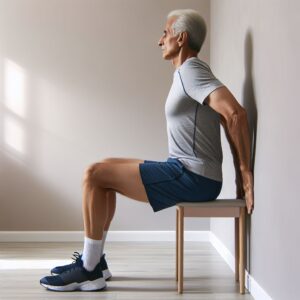
Using Support
If needed, seniors can use chairs or other supports to help maintain balance while performing wall exercises. For example, placing a chair nearby can provide a stable surface to hold onto if balance becomes an issue. It’s also helpful to have a family member or caregiver present to provide assistance and ensure safety.
Warm-Up and Cool-Down
Warming up before exercises and cooling down afterward can help prevent injuries and improve overall performance. A proper warm-up should include gentle stretching and light aerobic activity to prepare the muscles and joints for exercise. Similarly, a cool-down should involve stretching and relaxation techniques to help the body recover and prevent stiffness.
Tips for Staying Motivated
Staying motivated to perform wall exercises regularly can be challenging, but the following tips can help:
Setting Goals for Wall Exercises for Seniors
Setting realistic and achievable exercise goals can provide a sense of purpose and motivation. For example, seniors can set goals to perform a certain number of repetitions or hold a plank for a specific duration. It’s important to start with small, manageable goals and gradually increase the difficulty as strength and endurance improve.
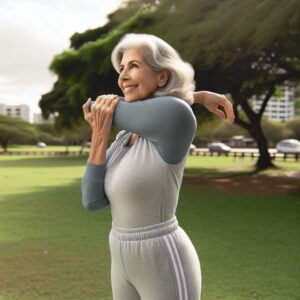
Tracking Progress
Using journals or apps to monitor progress can help seniors stay motivated by showing improvements over time. Recording the number of repetitions, duration of exercises, and any changes in strength or balance can provide a sense of accomplishment and encourage continued effort.
Involving Family and Friends
Encouraging social support and participation from family and friends can make exercising more enjoyable and motivating. Seniors can invite family members or friends to join them in their exercise routine, creating a sense of camaraderie and accountability. Group exercise sessions can also provide an opportunity for social interaction and support.
Celebrating Milestones
Rewarding achievements, such as reaching a new exercise goal, can help seniors stay motivated and committed to their exercise routine. Celebrating milestones can involve small rewards, such as a favorite treat or a special outing, to acknowledge progress and encourage continued effort.
Expert Insights and Testimonials
Experts agree that wall exercises are beneficial for fall prevention among seniors. Physical therapists and geriatric specialists often recommend these exercises for their simplicity and effectiveness. Additionally, many seniors have shared their success stories, highlighting how wall exercises have helped them improve their balance, strength, and overall quality of life.

Expert Opinions
Physical therapists and geriatric specialists emphasize the importance of incorporating wall exercises into a senior’s daily routine. Dr. Jane Smith, a renowned geriatric specialist, states, “Wall exercises are an excellent way for seniors to improve their balance and strength without the need for expensive equipment or gym memberships. These exercises can be easily adapted to suit individual fitness levels, making them accessible to everyone.”
Success Stories
Many seniors have shared their success stories, highlighting how wall exercises have positively impacted their lives. For instance, Mary Johnson, a 75-year-old retiree, began incorporating wall exercises into her daily routine after experiencing a fall. “I was afraid of falling again, but the wall exercises helped me regain my confidence and improve my balance. Now, I feel more stable and secure when walking,” she says. Similarly, John Davis, an 80-year-old grandfather, credits wall exercises for his improved mobility and strength. “I used to struggle with simple tasks like getting out of bed or climbing stairs. Since starting wall exercises, I’ve noticed a significant improvement in my strength and flexibility,” he shares.
Conclusion
In conclusion, wall exercises are a valuable tool for fall prevention among seniors. By improving balance, strength, and mobility, these exercises can help seniors maintain their independence and reduce the risk of falls. Seniors are encouraged to incorporate wall exercises into their daily routine and take the necessary precautions to ensure safety while exercising.
Wall exercises offer a practical and effective solution for seniors looking to enhance their physical health and prevent falls. With the support of family, friends, and healthcare professionals, seniors can confidently engage in these exercises and enjoy the numerous benefits they provide. Remember, it’s never too late to start, and every step taken towards improving balance and strength is a step towards a safer and healthier life.

